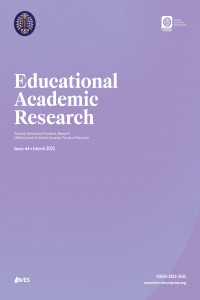HENRY DE MONTHERLANT’IN ÖLÜ KRALİÇE LA REİNE MORTE ADLI PİYESİNDE ÖLÜM KORKUSU VE ŞİDDETİN HIZI
Henry de Montherlant’ın 1942 de yazmış olduğu Ölü kraliçe La Reine Morte adlı eserinde baştan sona Şiddet kol gezer. Bir sahneden diğerine oyun kişileri Kralın oğlu Don Pedro ve gizli aşkı İnès de Castro Kral Ferrante’ın tehditkâr tutumu altında ölüm korkusunu yaşarlar ve daima kralın şiddetine maruz kalırlar. Kişilerin uzun monologlarının içeriğinde Kralın baskısı ve krallık makamının vermiş olduğu korkuyu oyun kişileri doyasıya yaşar, ölümün nefesini arkalarında hissederler daima. Kral Ferrante şiddeti kendi soyunun arılığının devamını sağlamak için bir korku ve baskı aracı olarak kullanır. Zaman zaman çeşitli şiddet yollarını dener. Şiddet Kişilere aşama aşama tattırılır. Yani kişilere her aşamada şiddetin dozu arttırılarak uygulanır. Birinci perdenin ilk sahnelerinde sözlü ve ılımlı tehditlerle başlayan replik ve monologlar son perdede şiddetin en son halini alacak biçimde artarak devam eder ve son perdenin son sahnesinde ölüm kişisi İnès’e ölümü tattırılarak şiddet en yüksek seviyesine ulaştırılır
Anahtar Kelimeler:
Ölü Kraliçe’de şiddet, Ölü Kraliçe, Henry de Montherlant, Ölü Kraliçe’de Şiddetin hızı.
Fear of The Death And The Speed Of Violence In The Play Named Queen Death Of Henry De Montherlant
The point in question is the violence from beginning to end in the work The Dead Queen written in 1942 by Henry de Montherlant. From one scene to the other, the characters, the son of King Don Pedro and his secret love Ines de Castro live in fear of death under the King Ferrante’s threat and they always exposed to the violence of the King. The characters dread from the King’s pressure and kingdom authority in the context of their long monologues, they always feel behind them the breath of death. King Ferrante uses the violence as a means of fear and pressure to ensure the continuation of his lineage. He tries occasionally various violence ways. The characters are exposed to violence gradually. In other words, violence continues increasingly in each step. At the first scenes of the first pitch, the cues and the monologues starting with verbal and moderate threats continue increasingly at the last pitch to the last degree of violence and the violence is reached to the highest severity by killing Ines in the last scene of the last pitch. It can be said that there is violence in Montherlant’s theatrical production named The Dead Queen, this violence potentiates in each next stage, the characters live in fear of death to the last stage and Ines is exposed to the violent death on the pretext of not being a noble at the end of the piece. Threats, violence, fear and death are dominated thoroughly in piece
Keywords:
the violence in The Dead Queen, The Dead Queen, Henry de Montherlant, severity of violence in The Dead Queen,
___
- Montherlant, Henry de (1950). Notes sur mon Théatre, l’Arche: Paris. http://www.alaindebenoist.com/pdf/henry_de_montherlant.pdf
- Blanc, André (1968). Montherlant un pessimisme heureux, Paris: Edution du Centurion
- Montherlant, Henry de (1952); Ölü Kraliçe, Çev. Mübeccel Bayramveli, Milli Eğitim Basımevi: İstanbul
- Blanc, André (1970). La Reine Morte Montherlant, Paris: Haitier, Profil d’une Oeuvre
- Lagard-Michard (1963). XX e Siècle: Les Grands Auteurs Français, Paris: Bordas
- Robichez, Jacques (1973). Le Théatre de Montherlant, Société d’Edition d’enseignement superieur: Paris
- Başlangıç: 2003
- Yayıncı: Atatürk Üniversitesi
Sayıdaki Diğer Makaleler
EDEBİ BİR TÜR OLARAK FABL YOLUYLA DİL ÖĞRETİMİ
Melik BÜLBÜL, Sadık TÜRKOĞLU, Deniz KÜZECİ
Cemalettin IŞIK, Züleyha YILDIRIM
Mehmet KÖK, Cem ASLAN, Cem ASLAN
Yabancı Dil Olarak Fransızcanın Öğretiminde Molière’in Cimrisi
HENRY DE MONTHERLANT’IN ÖLÜ KRALİÇE LA REİNE MORTE ADLI PİYESİNDE ÖLÜM KORKUSU VE ŞİDDETİN HIZI
Deniz KÜZECİ, Sadık TÜRKOĞLU, Melik BÜLBÜL
İŞBİRLİKLİ ÖĞRENME ÇALIŞTAYININ FEN VE TEKNOLOJİ ÖĞRETMENLERİNİN MODELİ UYGULAMA
GÜRCÜ KRALİÇESİ TAMARA’NIN SARIKAMIŞ Micingert SAVAŞI
ÇOCUKLARA YABANCI DİL ÖĞRETİMİNDE EYLEMSEL YAKLAŞIM
